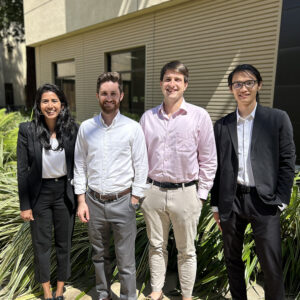Uncertainty and Hope in the Human Rights Field
There are many reasons to recommend a clinic to a fellow student: it helps bridge the gap between theory and practice; it surrounds you with like-minded friends; it offers great mentorship both during and after the quarter; and it is a great opportunity to explore an area of interest. They were all true of my experience at the International Human Rights and Conflict Resolution Clinic, yet reflecting on the quarter, I found this clinic particularly inspiring because of its integrity and creativity.
As one of our partners said repeatedly, advocates need to be both patient and impatient – while large-scale injustices won’t end overnight, every bit of progress generates momentum.

Walking into my first meeting with Gulika, I was a little worried. Since human rights violations and conflicts take all shapes and forms, I wasn’t sure if my training at the Clinic would translate well into other contexts. Gulika offered reassurance. Uncertainty is the nature of the field, she told me, and an effective advocate learns and adapts on the ground to find the best way to center the needs and voices of impacted communities.
The Clinic has done just that: embracing challenges and highlighting the needs of the affected populations. The Clinic selected cases that often lack popular support or political will; they exposed us to a wide range of advocacy tools beyond traditional ones such as domestic litigation and “naming and shaming”; and taught us that allyship means allowing our partners’ voices to guide our work. The time invested in developing relationships and learning our partners’ perspectives were building blocks to almost any effective advocacy.
The Clinic also gave me hope in the field. Besides the inspiration I got from getting to know people who pour their careers into fighting seemingly insurmountable injustices, it was also enlightening to learn about and experience the potential and impact of human rights and conflict resolution work in advancing change, even in situations where making progress is challenging. By working with the affected populations and prioritizing their needs, we stepped outside of our comfort zones and sought creative avenues of advocacy. In return, I learned that there is always much to do and tangible progress on a discrete scale is always possible. As one of our partners said repeatedly, advocates need to be both patient and impatient – while large-scale injustices won’t end overnight, every bit of progress generates momentum.
